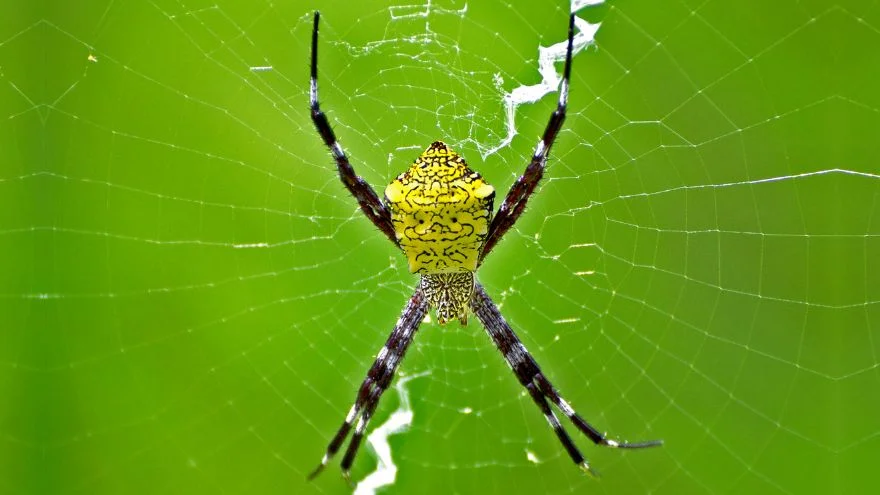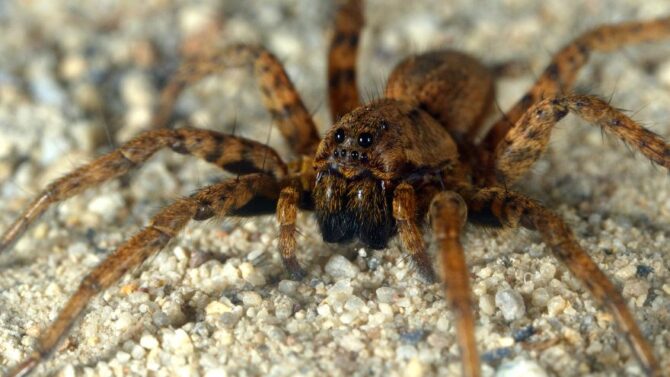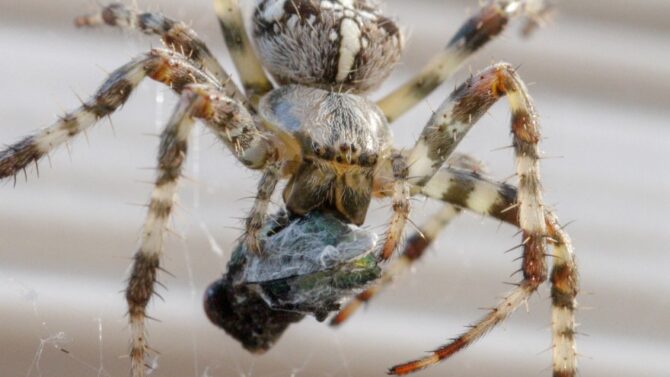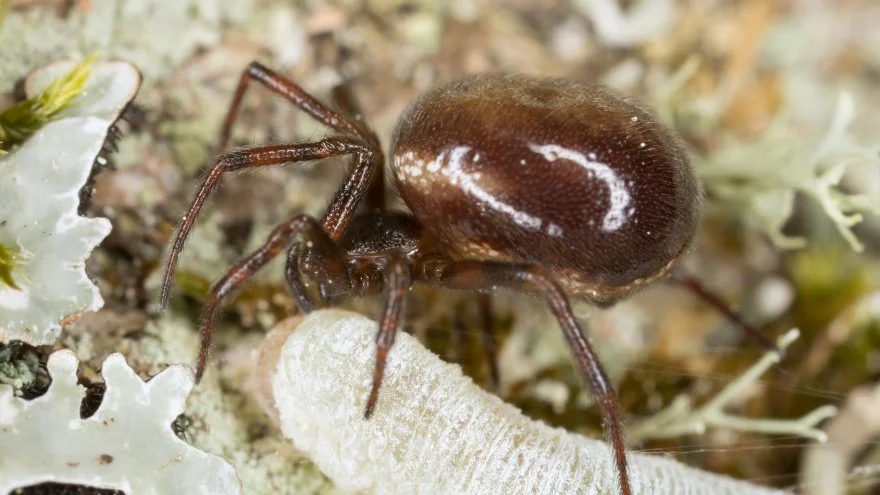The Hawaiian garden spider (Argiope appensa), also referred to as the banana spider, belongs to the Aranidae family and is a species of orb-weaver spider native to Hawaii. It is commonly known as the “honeypot spider” because it builds webs near honey pots and bee nests.
They are omnipresent and range in many environments, primarily in Australia, Indonesia, Hawaii, Taiwan, and Guam.
Spiders are the largest order of arachnids with more than 40,000 known species worldwide.
Most spiders are nocturnal hunters and use skills to capture their prey. The Hawaiian garden spider spins webs to trap small rodents, birds, and reptiles.
Read on for more information on the Hawaiian garden spider habitat, life cycle, diet, and reproduction.
Hawaiian Garden Spider Scientific Classification
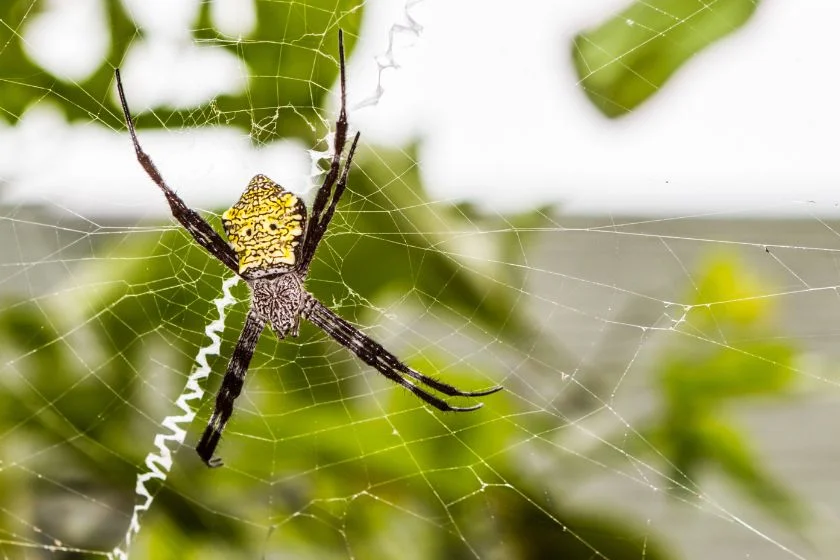
| Kingdom | Animalia |
| Phylum | Arthropoda |
| Subphylum | Chelicerata |
| Class | Arachnida |
| Order | Araneae |
| Infraorder | Araneomorphae |
| Family | Araneidae |
| Genus | Argiope |
| Species | Argiope appensa |
Description
Argiope appensa are solitary species that thrive best in sunny, warm conditions and prefer to live close to their species.
In Hawaii, they are termed yellow garden spiders because of the distinctive black and yellow markings on the females.
Appearance
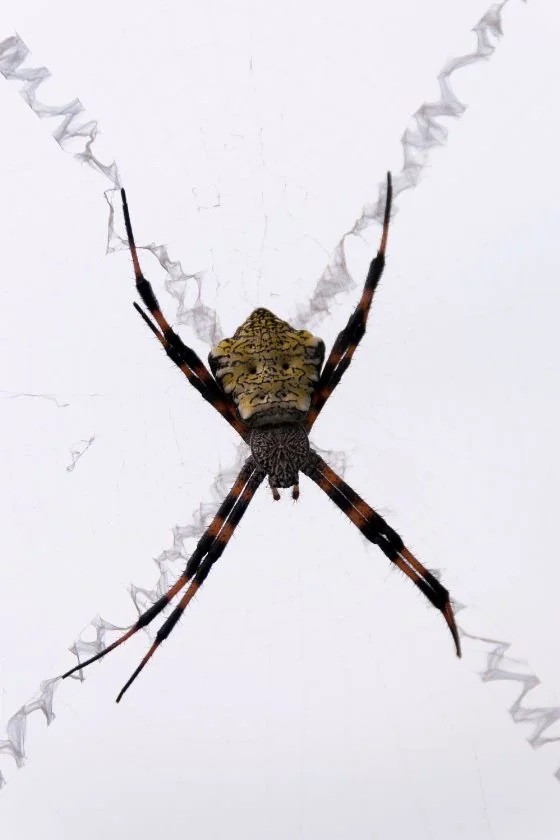
They have eight eyes, banded legs, and an abdomen resembling a pentagon; their cephalothorax is darker than other species.
Males are brown and look lifeless in color, whereas females are brilliantly black and yellow.
The male and female Hawaiian Garden Spider differ significantly in size. The larger female’s heptagonal abdomen is typically bright yellow with several black designs.
In contrast to other species, they can coexist peacefully with other spiders from the same or different genera, and sexual dimorphism is glaring among them.
The brown male Hawaiian garden spider grows to around 1.9 cm in length, while the black and yellow females measure between 5.1 and 6.4 cm.
Web

The web is a network of silk threads that Hawaiian garden spiders create. They use their spider webs to catch prey, protect themselves, and build nests.
Their webs are made out of two different types of silk; dragline silk and orb-weaving silk. The dragline silk is strong and flexible, while orb-weaving silk is stronger and more sturdy.
Spider webs are made up of many tiny fibers called filaments. Each filament comprises monofilaments and even smaller strands called microfibers.
Lifespan
The Hawaiian garden spider can survive up to two years in captivity and four years in the wild.
However, their lifespan is low compared to tarantulas, who live between 10 to 20 years; some tarantula spiders are even known to live longer than 30 years.
Venom
The venom of the Hawaiian garden spider (Argiope appensa) contains two neurotoxins: alpha-latrotoxin and beta-latrotoxin.
These toxins cause muscle paralysis and death in mice. However, their venom is non-poisonous to humans.
Habitat
Lava fields are the ideal environment for the Hawaiian garden spider; they are located near water and provide safety for these spiders.
Since they live in volcanic environments, lava fields are naturally rich in nutrients.
Lava fields exist in many environments, from upland forests to beaches.
The Argiope appensa ranges in Taiwan, Australia, New Caledonia, New Guinea, Indonesia, and various islands in the western Pacific Ocean and Hawaii.
Communication
Hawaiian garden spiders can communicate via the following forms;
Pheromones
Pheromone is a chemical released from glands near the tip of the abdomen, and they cause specific behaviors in other organisms.
Male spiders produce pheromones that attract females, while female spiders also release pheromones that tell males they’re ready to mate.
Sound
Like many other arthropods, spiders create sound waves to communicate. Spiders use these sounds to find mates and warn other members of danger.
Vibrations
Spiders create vibrations that travel through the air when they spin their web. These vibrations help the spider locate food and warn others about dangers.
If a predator approaches, the spider may vibrate faster than usual to scare away the intruder.
Mating
Males will search for females while females look out for the males. When they find each other, they will copulate, which lasts about 20 minutes.
Females mate with only one male at a time; if a female mates with another male, she will not be able to reproduce that year.
Reproduction
Hawaiian garden spiders have two different ways of reproducing. One way is called oviparity, where they lay eggs inside their web, and the second is called viviparity, where they give birth to live young.
After mating, oviparous females produce between 100–200 eggs yearly, while viviparous females produce 1–10 live offspring yearly.
Giving Birth
The female Hawaiian garden spider gives birth to live young after mating. After the female lays her eggs, she will nurse them until they hatch.
Baby Hawaiian garden spiders are born with black eyes and legs. Once the spiderlings are born, they will crawl away from their mother and start looking for food.
Their first meals are usually small insects, and as they get older, they eat larger insects.
Biological Treatment
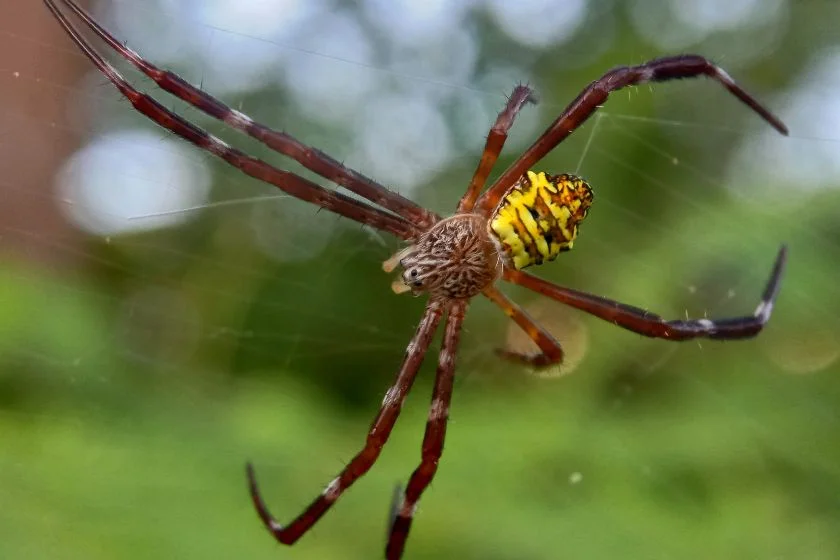
The presence of Hawaiian garden spiders in an environment is more of a symbiotic relationship than parasitic.
However, if you want to get rid of them, you should consider the following:
- Include plants that repel spiders: Hawaiian garden spiders don’t enjoy the strong scents of lavender, mint, eucalyptus, and citronella. Hence, these plants can help prevent spiders from creating webs in your yard by adding these plants to your garden.
- Apply an organic repellant spray: Some strong scents, including citrus and vinegar, and put off these spiders. To keep them away, combine equal parts of water and lemon juice or white vinegar in a tiny spray bottle to create a natural spider repellant.
- Use peppermint essential oil: Hawaiian spiders are put off by the strong scent of peppermint essential oil. You can dilute the oil with water and spray it near windows and doors; when you do this, you’ll succeed in keeping them away from your home.
Benefits of Hawaiian Garden Spiders
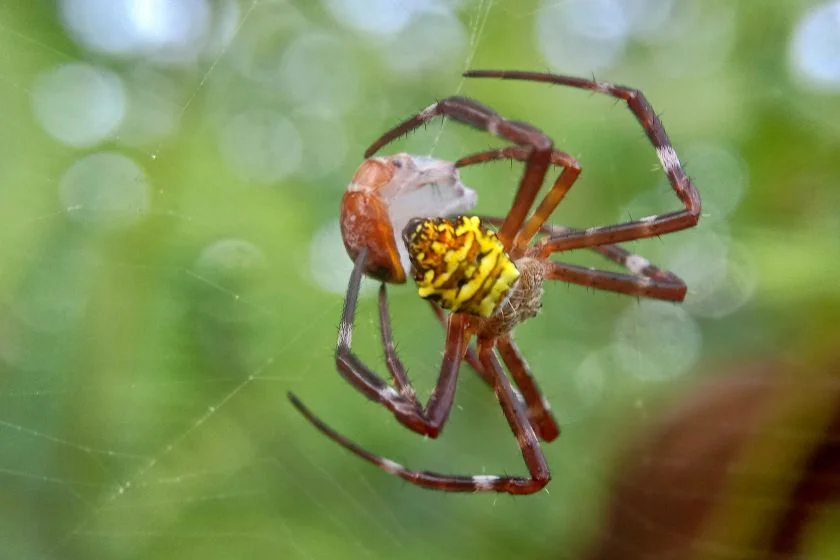
The Hawaiian garden spider helps in the following:
- Environmental Preservation: They help to preserve the environment by eating harmful bugs.
- Insect Control: They control insect populations by preying on other smaller insects.
- Disease Prevention: They help to prevent diseases by killing and eating disease-carrying insects.
- Weed Control: They kill and prevent the spread of weeds by eating them
Related Questions
What environment supports a Hawaiian garden spider?
They may survive well in various environments, including gardens, bushes, tree branches, roadsides, and artificial structures.
Are Hawaiian garden spiders poisonous?
No, Hawaiian garden spiders are not poisonous. However, some species produce venom that can irritate the skin and cause pain. When threatened, they can sting humans and cause temporary skin irritation on the skin. However, their venom is harmless to humans and cannot result in death.
Are Hawaiian garden spiders only found in Hawaii?
Hawaiian garden spiders are not only found in Hawaii. They are also present in places like Taiwan, Indonesia, and Australia. However, they are only called Hawaiian garden spiders because they are predominantly native to Hawaii.
What do Hawaiian garden spiders eat?
They are insectivorous carnivores and eat insects such as flies, bees, moths, mosquitoes, beetles, and cockroaches, and this helps to reduce pests in your environment.
How long do Hawaiian garden spiders live?
Compared to other spider species, the Hawaiian garden spider can survive for only two years in captivity and about four years in the wild.
Conclusion
The harmless and helpful Hawaiian garden spider can live for two to four years and is a free pest control solution for homes and gardens.
They are highly environmentally resistant and can survive well in various habitats, including gardens, bushes, tree branches, roadsides, and artificial structures.
References: World Spider Catalog
